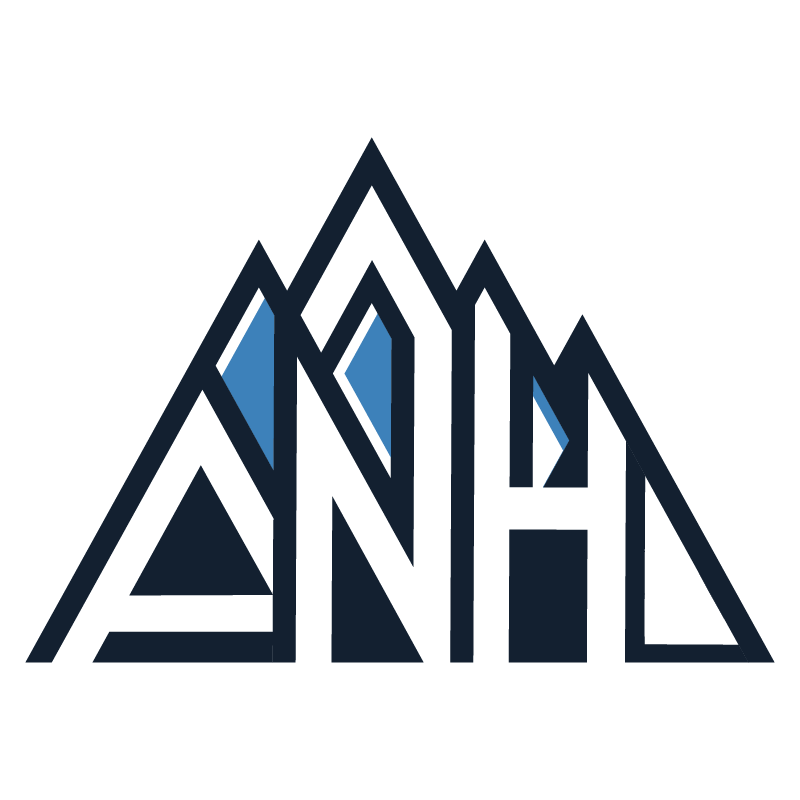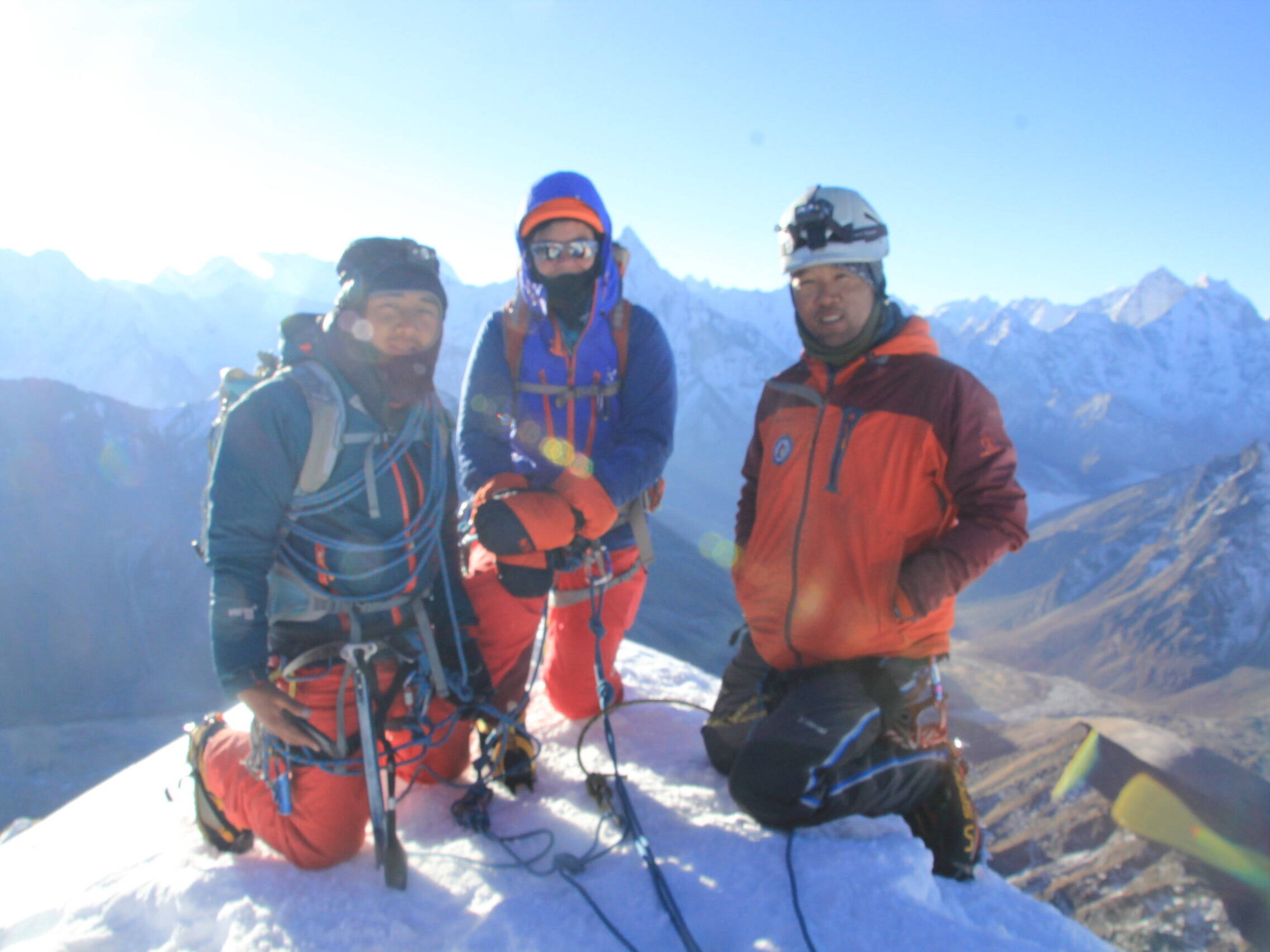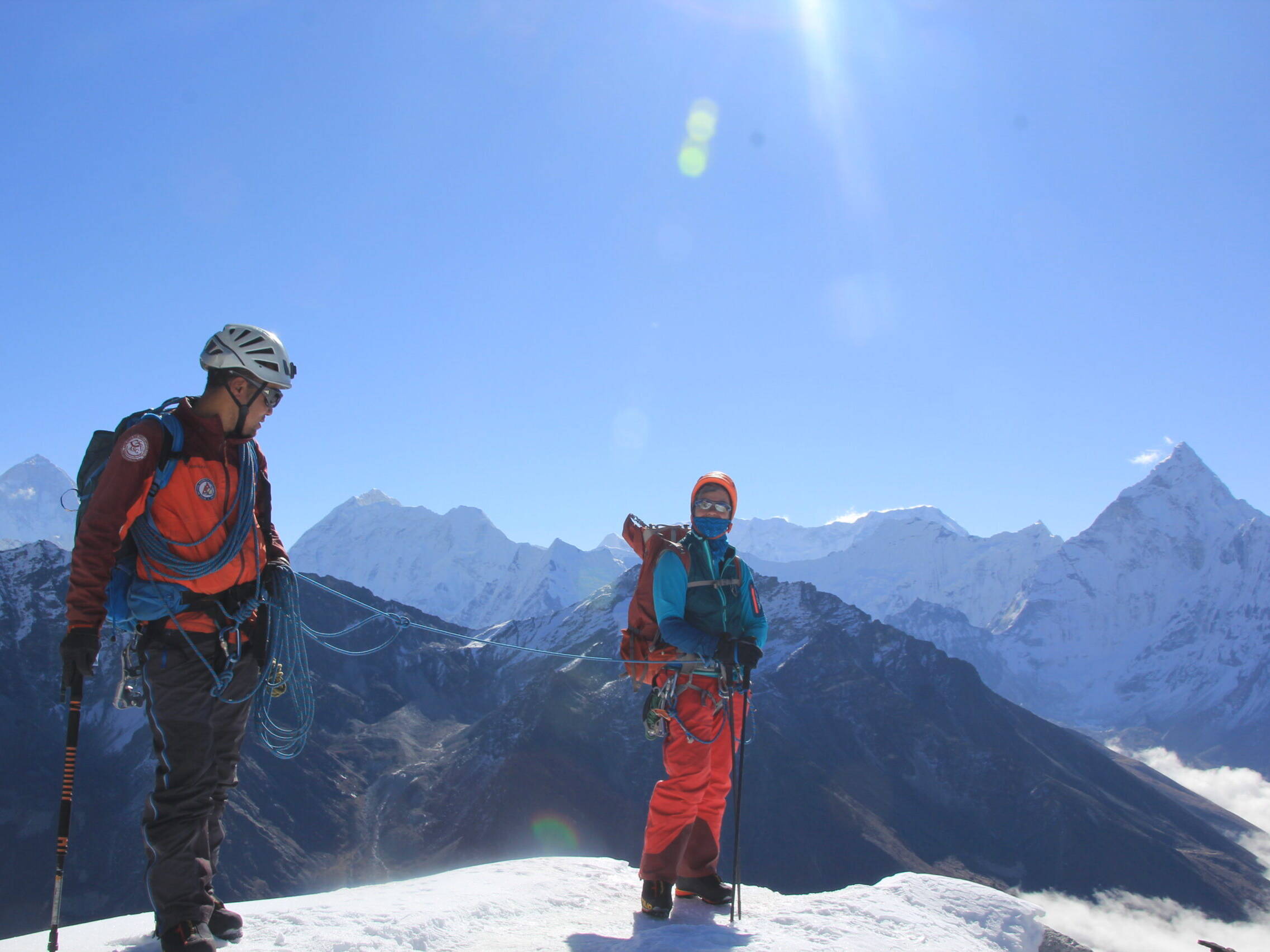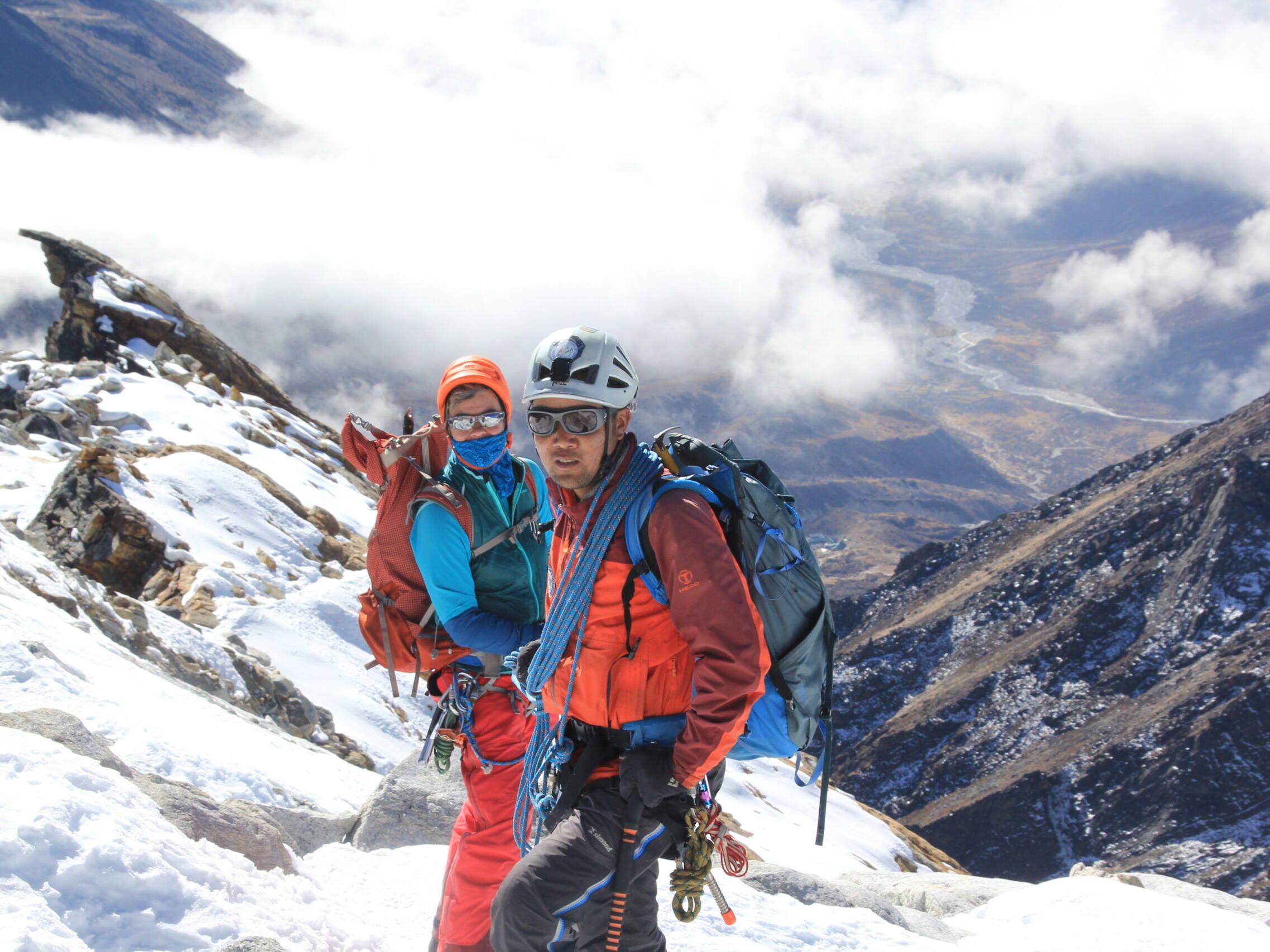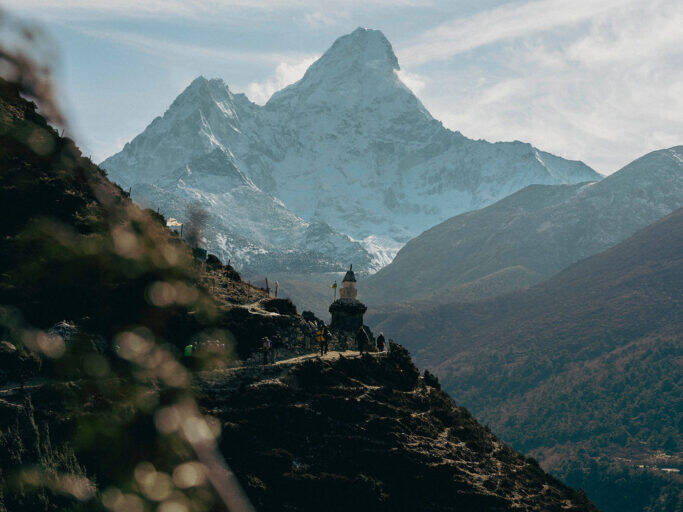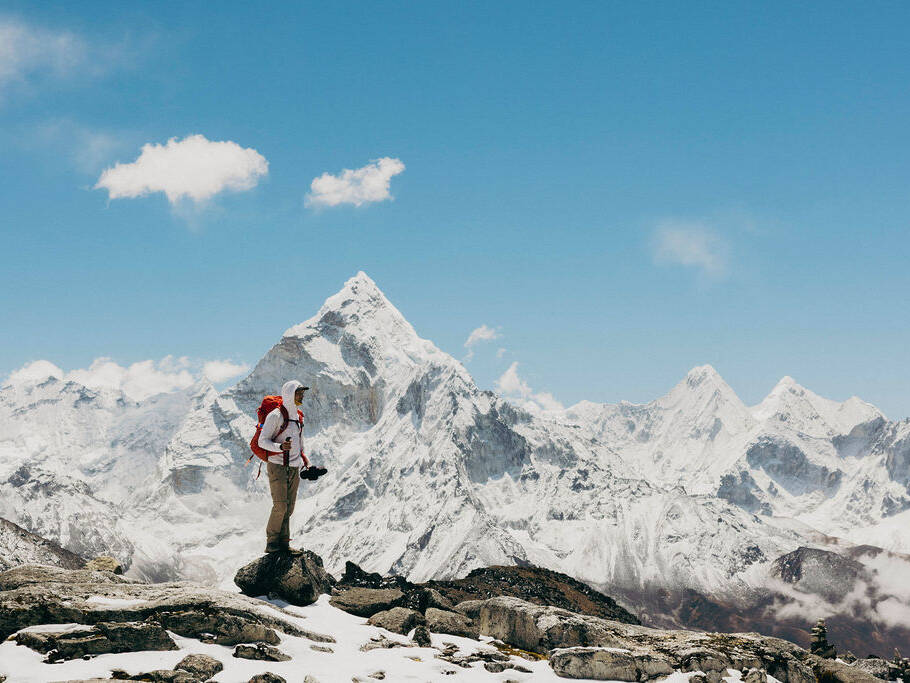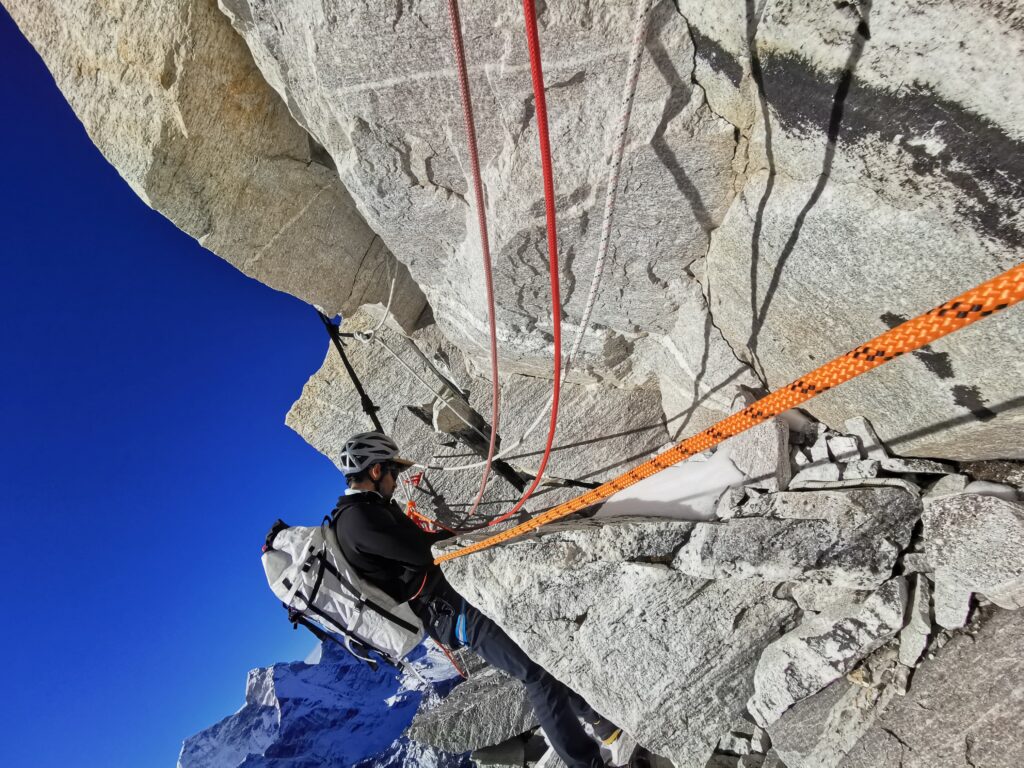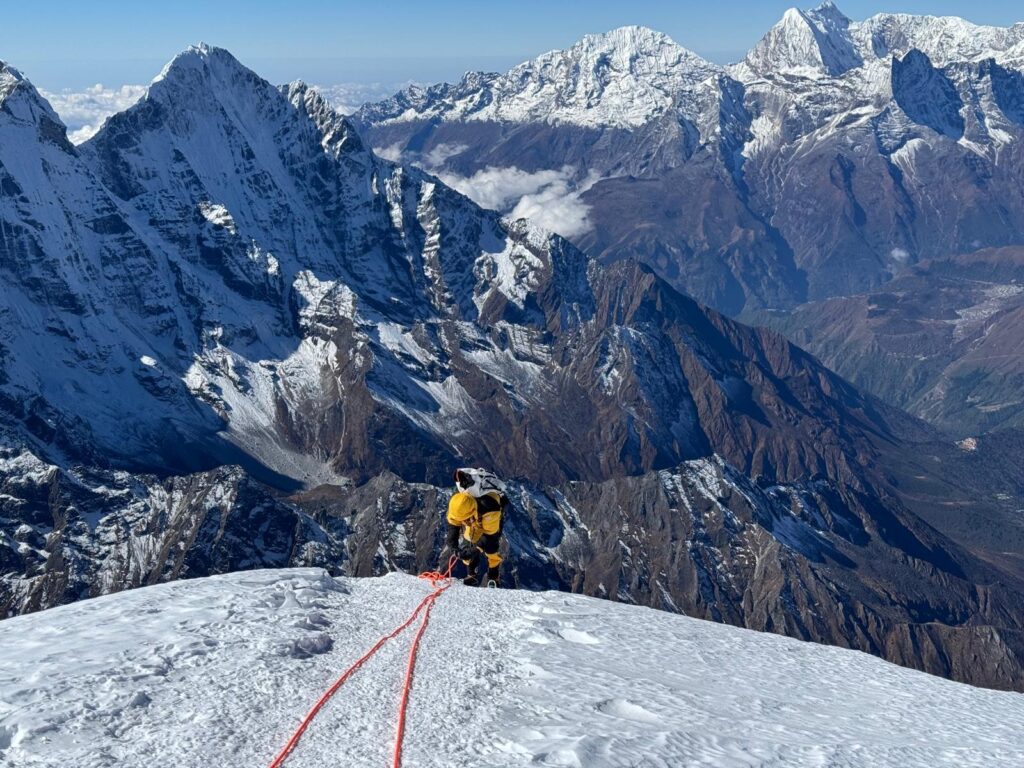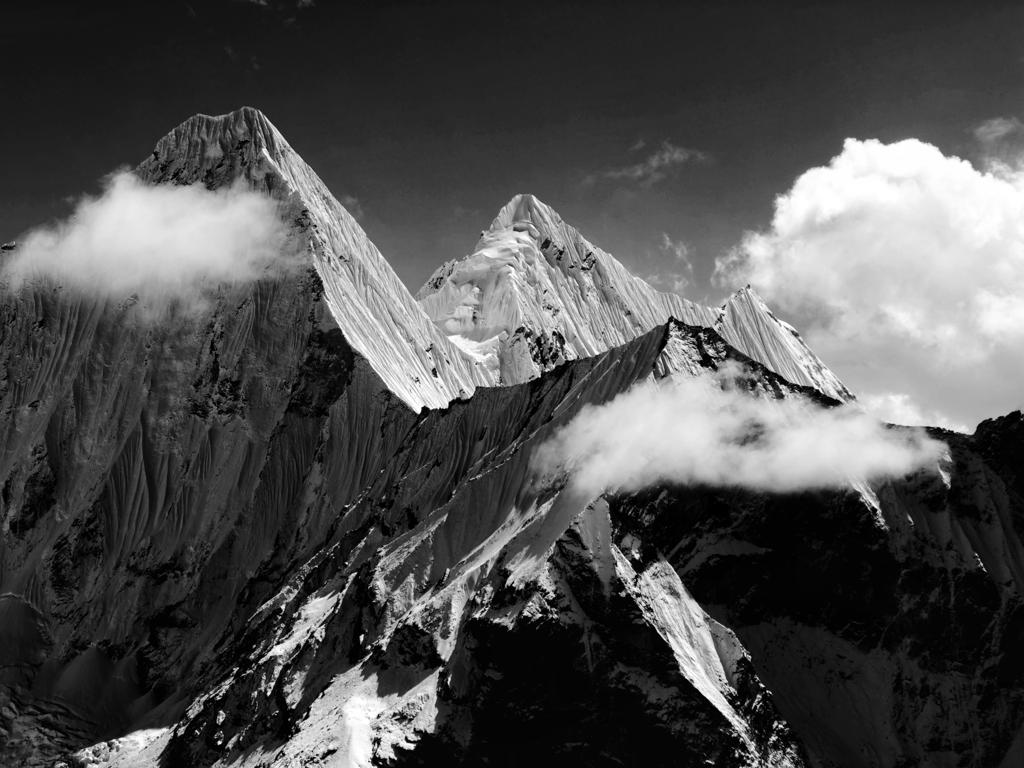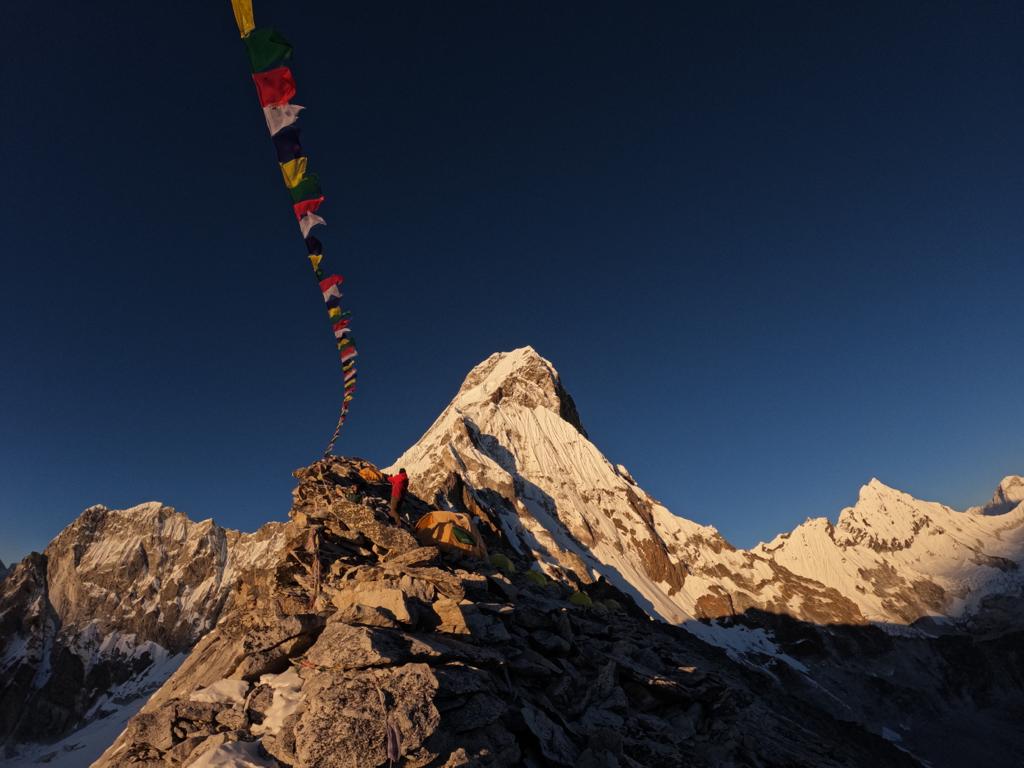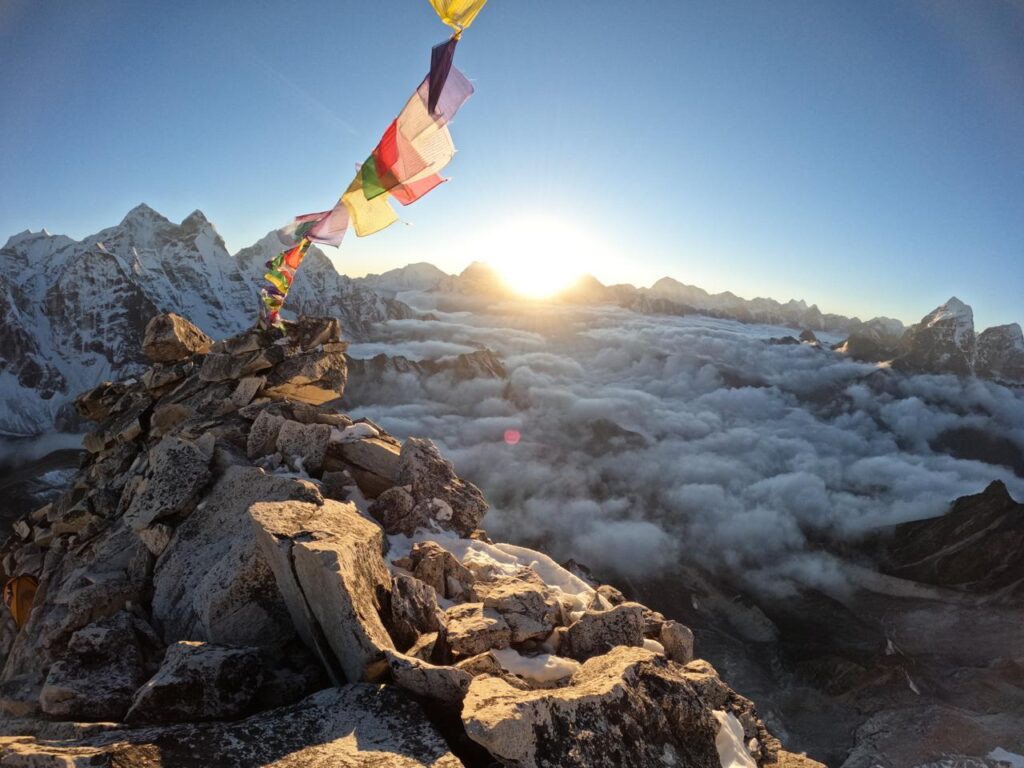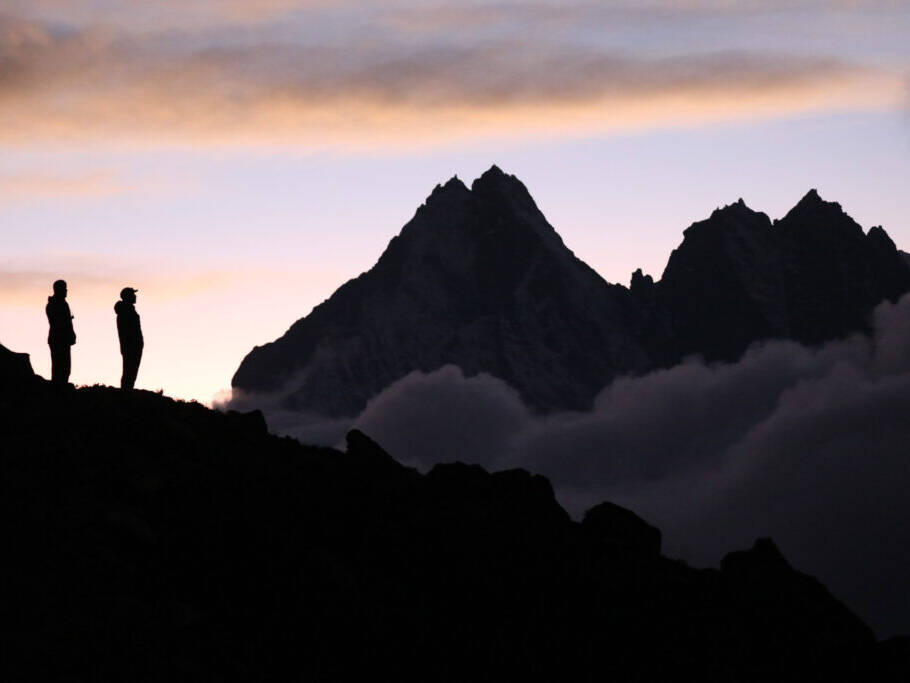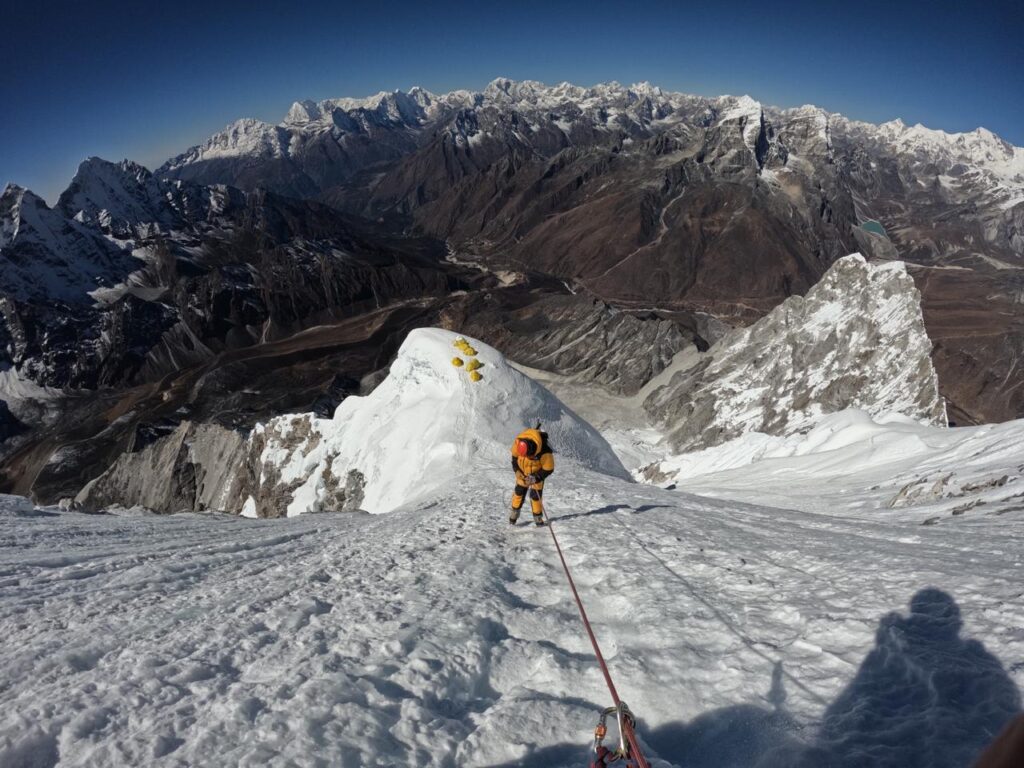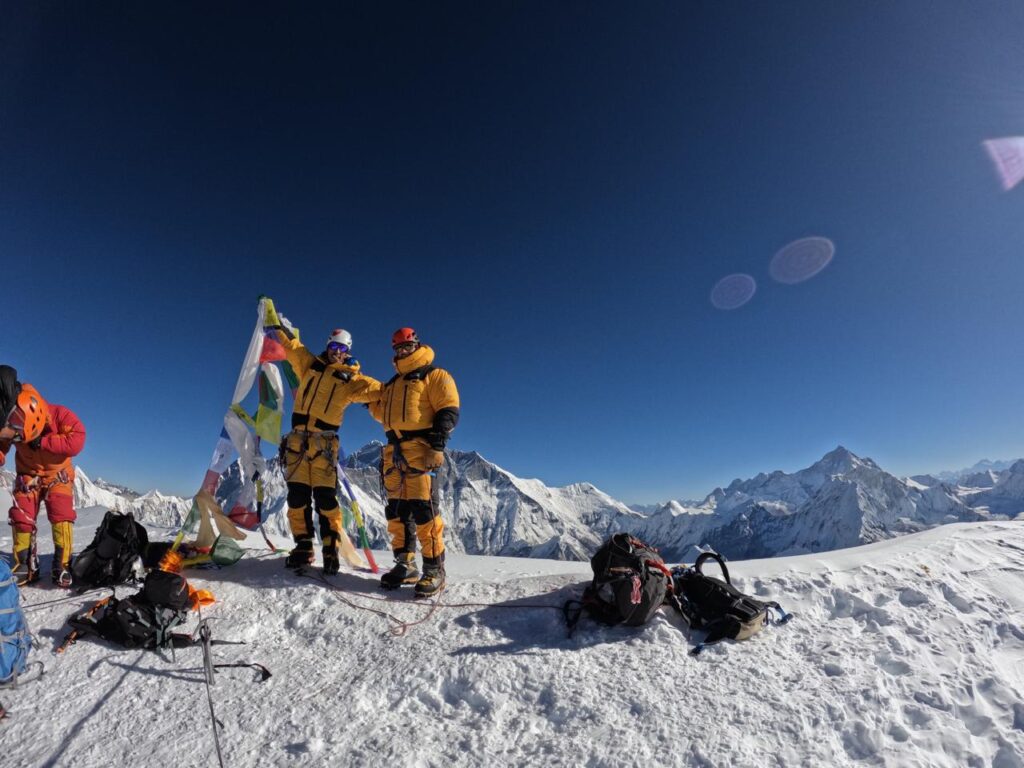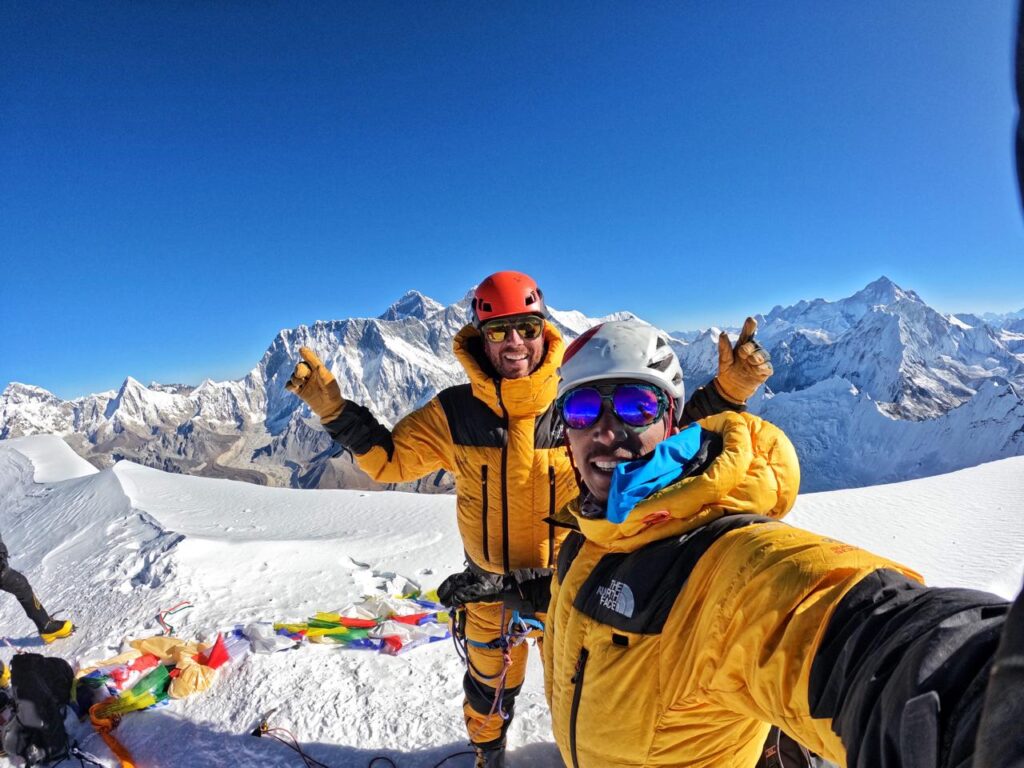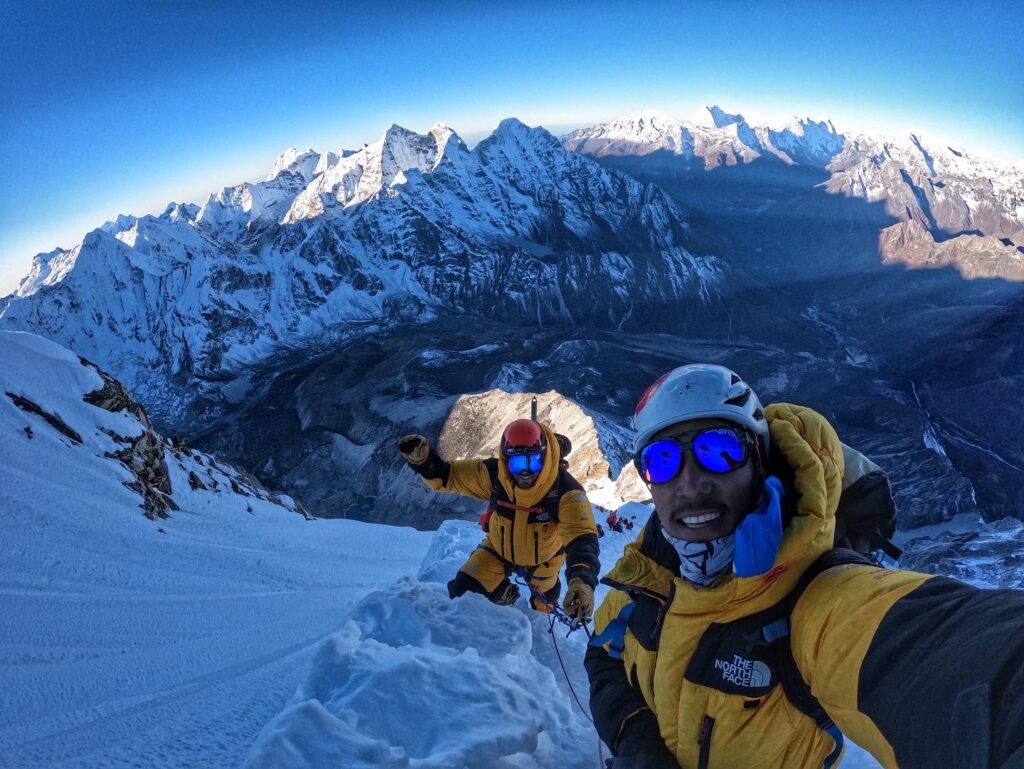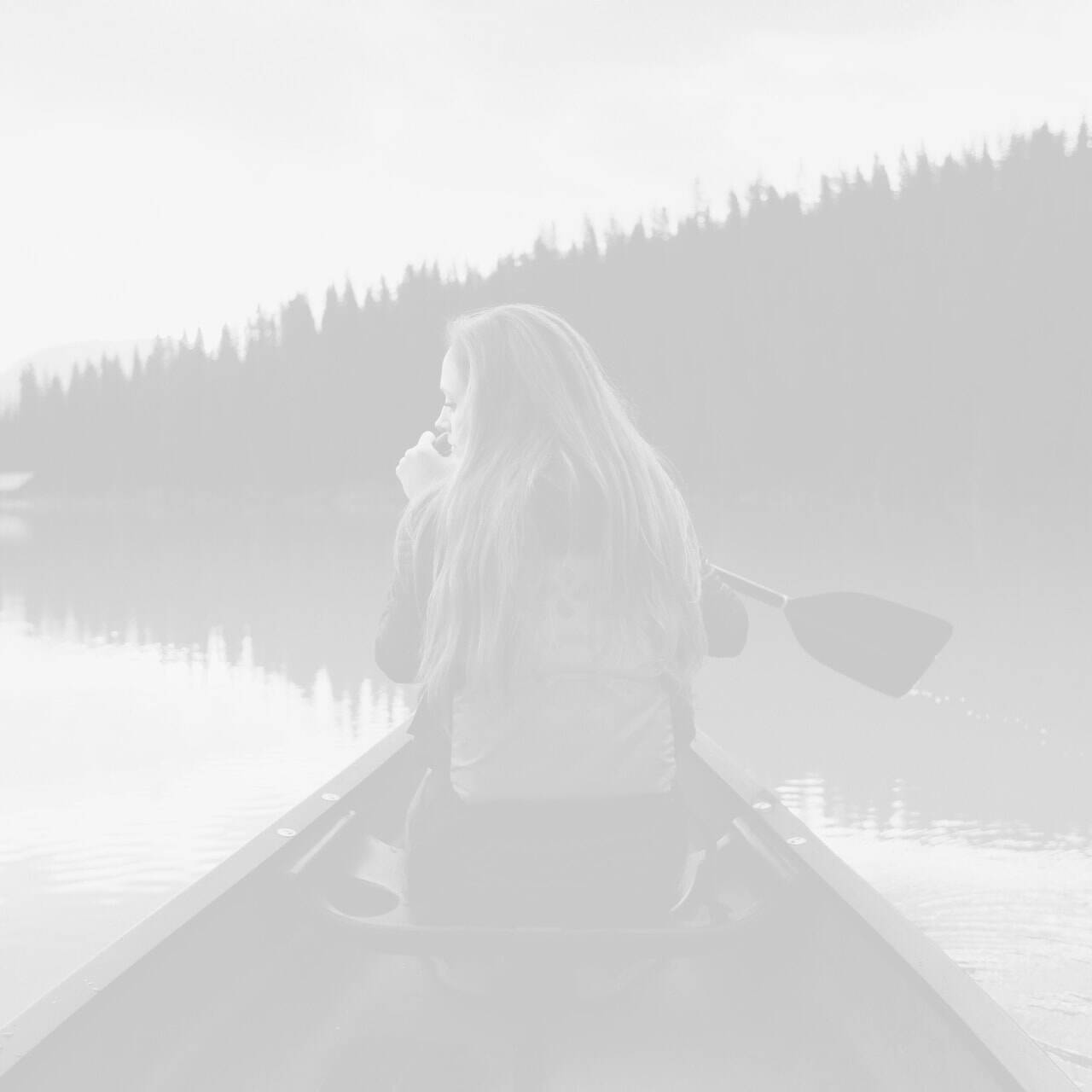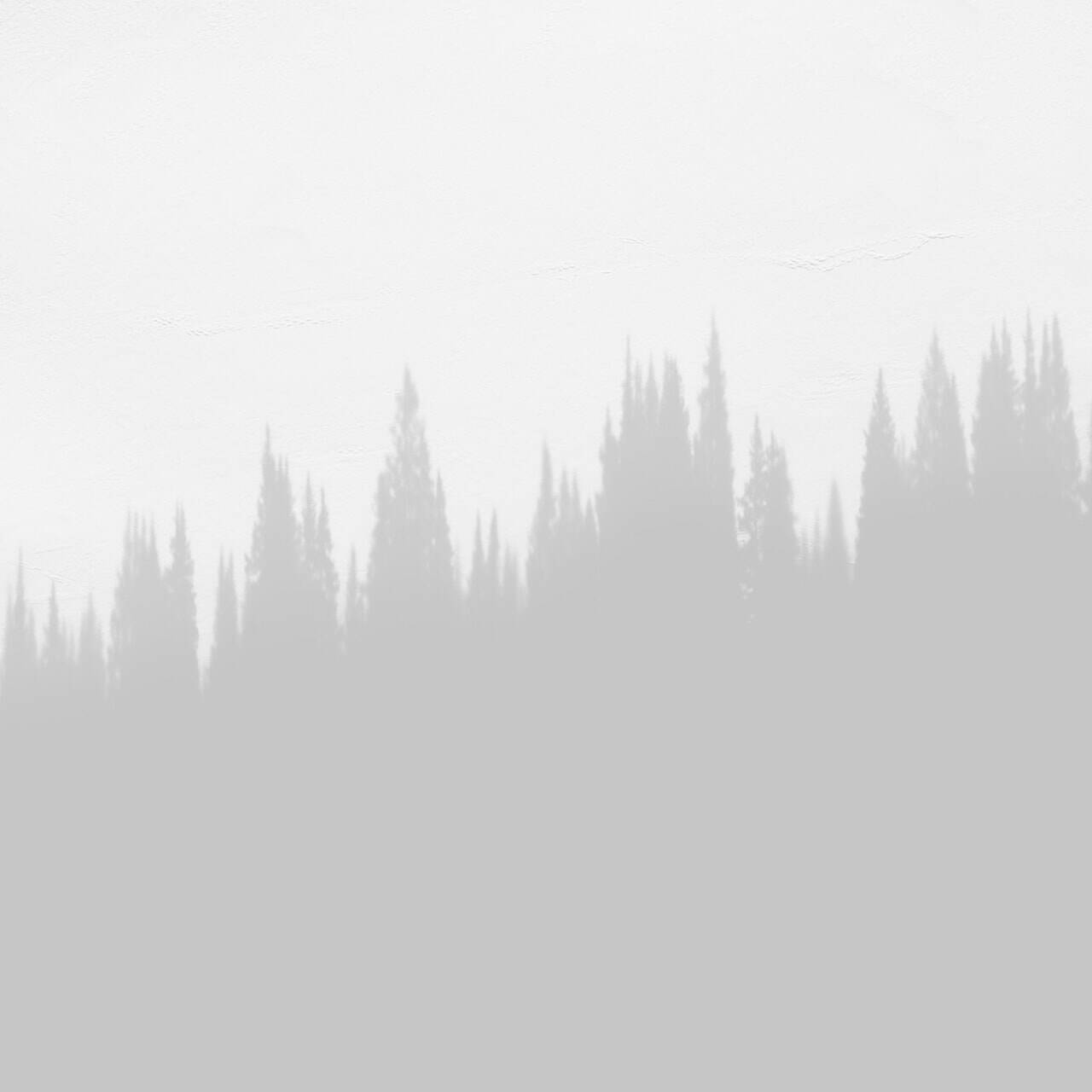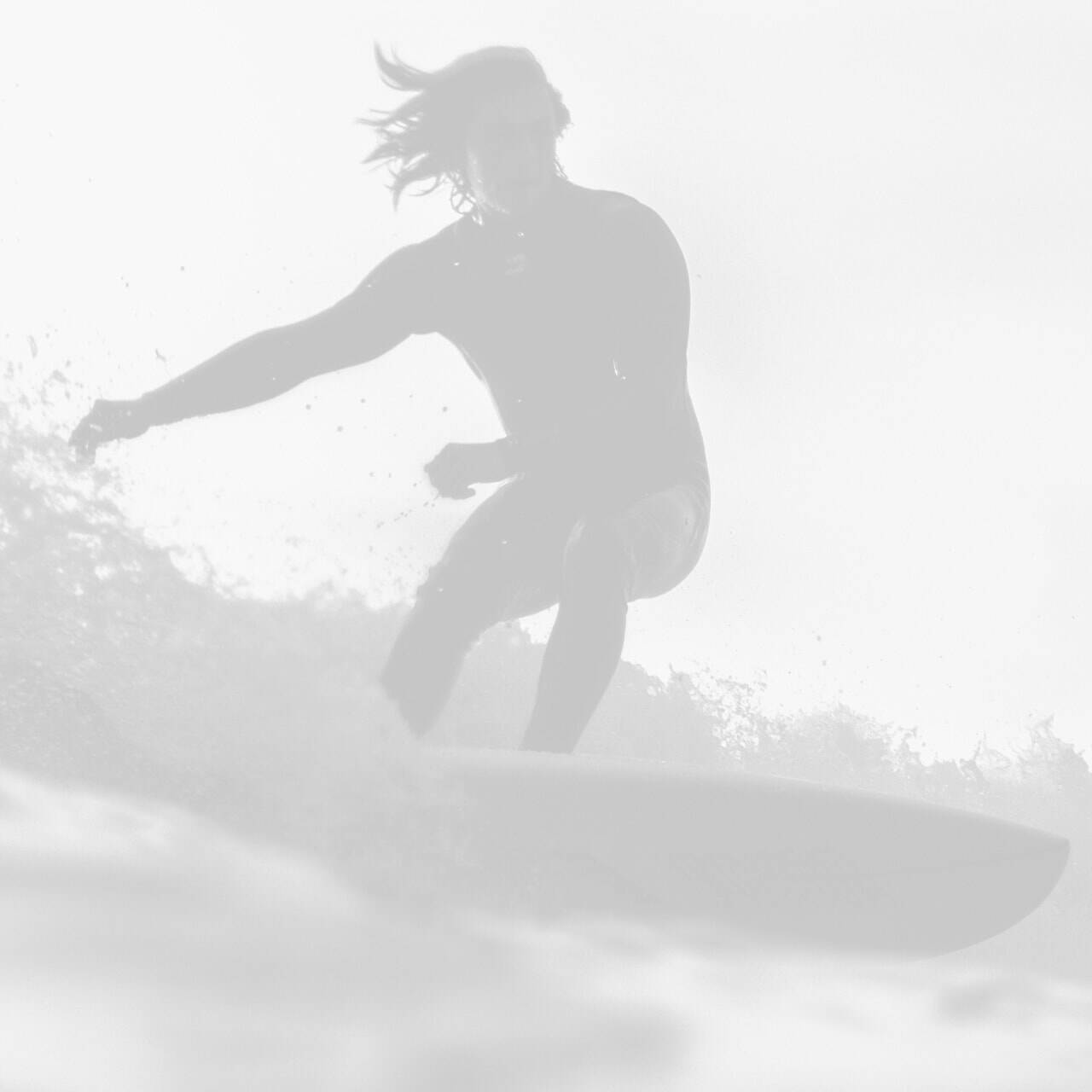Lobuche Peak Climbing
Lobuche Peak is a popular destination for mountaineers situated just above the Lobuche village in the Khumbu Region. Lobuche peak is a perfect challenging activity addition for a visit to the Khumbu region. We have plenty of experience with this mountain and would be keen to take you on this adventure. The peak is technically not too challenging for climbers with some experience (rated PD+) but no mountain should be underestimated with the usual dangers arising from altitude, exposure and weather conditions.
Lobuche Peak is a popular destination for mountaineers situated just above the Lobuche village in the Khumbu Region. Lobuche peak is a perfect challenging activity addition for a visit to the Khumbu region. We have plenty of experience with this mountain and would be keen to take you on this adventure. The peak is technically not too challenging for climbers with some experience (rated PD+) but no mountain should be underestimated with the usual dangers arising from altitude, exposure and weather conditions.
Lobuche has two different summits- Lobuche East Peak (6119m) and Lobuche West Peak (6145m) connected via a knife-edge ridge. Base Camp is located to not far from the Lobuche village to the south. It gives easy access to the south ridge. Lobuche East has a very dramatic edge to the east, forming a three-ridged pyramid. South and Southeast Ridges form a typical rock triangle extending to the Khumbu glacier moraine. The peak dramatically towers over the village and is easily identifiable from the Everest trail.
We approach Lobuche via the Everest trail from Lukla, after a short 35-minute flight from Kathmandu and 20 minutes from Manthali, Ramechhap. We make our way through various Sherpa villages towards Namche Bazaar – the key-trading town of the region providing access to the higher valleys. We continue to the famous monastery Tyangboche (Tengboche) on the way to which we should get our first view of Everest and Lhotse. We continue all the way to Gorak Shep (5170m) as part of acclimatization phase. then take on Kala Patthar (5,550m), a satellite peak of Pumori, for a classic view of Mt. Everest and the Khumbu Icefall. We can visit Everest Base Camp EBC (5,350 m) which is only a short hike away. then return to Lobuche where we pick up supplies and trek to Lobuche . Allowing for a further 1 day of acclimatization we then start the Trek to high Camp 5,600 m) Camping Overnight on Moraine Rock, then start to climbing along the South Ridge Via Rock,snow and ice, to the summit (6119m).
The views from the base camp, the climbing route and ultimately the summit are superb. The summit ridge offers a 360-degree panorama of the region including Ama Dablam, Pumori, and Everest. Certainly an unforgettable experience!
We offer you a full board package for Lobuche including the climbing permit from the NMA and all other necessary logistics from arrival in Kathmandu up to your final departure. We organize your accommodation in Kathmandu as well as throughout your trek, our cooks freshly prepare you the nutritious meals throughout the climbing period and experienced and professional trekking and climbing guides accompany you on the trek as well as the climb. In addition, we can organize any sightseeing in around Kathmandu.
The package can be flexibly adjusted to your requirements You. please feel free to contact us any time for suggestions and advice. We’d be happy to take you on this adventure at your desire.
Detailed Itinerary
01
Arrival at Kathmandu Airport and transfer to hotel
02
Briefing and drive to Mulkot (570m-95 Km.-3 Hrs.) (Way to Ramechhap); hotel.
03
Drive to Manthali (475m-1 Hr.), fly to Lukla (2837m) trek to Phakding (2610m-3 Hrs.); lodge.
04
Trek from Phakding to Namche Bazar (3450m-7 Hrs.); lodge.
05
Rest in Namche Bazaar, hike to Hotel Everest View (HEV) for acclimatization.
06
Trek from Namche to Tyangboche (3870m-5 Hrs.); lodge.
07
Trek from Tyangboche to Dingboche (4390m-6 Hrs.); lodge.
08
Rest and acclimatization in Dingboche, explore hiking.
09
Trek from Dingboche to Lobuche (4930m-5 Hrs.); lodge.
10
Trek to Gorak Shep (5160m), explore Everest Base Camp (5300m) and back; lodge.
11
Explore sunrise at Kala Patthar (5545m) and trek back to Lobuche; lodge.
12
Trek to Lobuche Peak high Camp (5500m-3 Hrs.); camping
13
Climb Lobuche East (6119m) summit and return to Base Camp (10hrs), camping.
14
Trek from Lobuche Base Camp to Pangboche (3850m-6 Hrs.); lodge.
15
Trek from Pangboche to Namche Bazar (3445m-5 Hrs.); lodge.
16
Trek from Namche Bazaar to Lukla (2850m-8 Hrs.); lodge.
17
Fly to Ramechhap, drove to Kathmandu (5 Hrs.), transfer to Hotel; farewell dinner.
18
Contingency or leisure day in Kathmandu; hotel.
19
Transfer to the airport for your final destination.
Included in Your Trek Package:
- Transfer from Airport – Hotel – Airport: Car, Van, Hi-ace or Coaster in a private vehicle.
- Accommodation in Kathmandu: Three (3) nights on twin-share basis with Bed & Breakfast plan.
- Accommodation during Trek: Local lodges for 15 nights
(15 breakfasts, 14 lunches, 12 dinners, tea/coffee, twin-share rooms with comfortable foam mattress & pillows). - Accommodation during Camping: Meals and overnight stay at High Camp (breakfast, lunch, dinner, tea & coffee).
- English speaking, experienced, and government licensed Sherpa Guide.
- All camping equipment required during the trek: sleeping tents, mattresses, kitchen tent, kitchen equipment (as per group size).
- Climbing group gear: ropes, ice screws, snow bars.
- Trekking cook, kitchen staff, trek Sherpa, and other support staff during Lobuche Peak climbing.
- One Sherpa guide-assistant provided if group size exceeds 4 trekkers.
- Porters: One porter for every two trekkers (standard for all climbing trips).
- Trek staff costs including salary, insurance, equipment, food, and accommodation.
- Personal insurance for all Nepalese staff.
- Energy supplies (Snickers, Mars, Bounty) and fresh/canned fruits during the trek.
- First aid medicine kit.
- Lobuche Peak Climbing Permit.
- Sagarmatha National Park entry fee, TIMS permits, and all other required official documentation.
- Round-trip airfare Kathmandu – Lukla – Kathmandu (including airport tax).
- All government and local taxes.
- Lobuche Peak Climbing certificate issued by the Nepal Mountaineering Association (NMA).
- Your personal travel & medical insurance (mandatory).
- Nepal entry visa fee.
- Lunch & dinner in Kathmandu.
- Beverages such as soft drinks, mineral water, boiled water, and beer.
- Tips for guide, porters, and driver (customary).
- Any personal expenses not mentioned in the “Cost Includes” section.
- Additional night accommodation in Kathmandu in case of early return from trek (for any reason) than the planned itinerary.
Packing List
Essential Personal Climbing Gear
- Climbing Helmet – lightweight, essential for protection against rock/ice fall.
- Alpine Climbing Harness – simple design, glove-friendly, secure locking system.
- Crampons – steel, anti-balling, precise fit for boots, lightweight.
- Ice Axe – versatile, general-purpose technical axe (T-rated).
- Ascender (Jumar) – glove-friendly, practice use before expedition.
- Multi-LED Headlamp with spare batteries (Li-Ion recommended).
- Carabiners – 2 locking (large & small) + 4 regular.
- Rappel device (Figure 8, ACT, or similar); knowledge of Munter Hitch essential.
- Trekking poles – adjustable with outside locking mechanism.
- Slings – one 3m (10ft) and three 2m (6ft).
- Prusik loops – e.g., 0.6m and 1.2m, for emergencies.
- Masks, hoses, and regulators – high-quality for safety.
- Altimeter / GPS watch (ABC functions, long battery life).
Note: All technical gear should be UIAA or CE certified.
Clothing – Upper Body
- 1–2 short-sleeve Merino base layers (medium insulation).
- 2 long-sleeve Merino base layers (medium & thick).
- One fleece pullover (medium weight).
- One fleece jacket.
- One hardshell waterproof Gore-Tex jacket (helmet-compatible hood).
- Lightweight down jacket for base camp/short breaks.
- One very warm expedition-grade goose-down jacket with hood or full down suit.
Clothing – Hands
- Lightweight liner gloves.
- Warm down mitts with Gore-Tex over-mitts (spare mitts recommended).
Clothing – Head
- Warm wool or synthetic hat covering ears.
- Balaclava or face mask.
- Scarf or neck sleeve, bandana for dusty conditions.
- Brimmed sun cap / ball cap.
- Glacier sunglasses with side shields (x2).
- Ski goggles (light & dark lens) for windy conditions.
Clothing – Lower Body
- Merino underwear briefs.
- Walking shorts (optional).
- Walking trousers for trekking/base camp.
- 2 thermal Merino bottoms (150–200 weight).
- 1 heavy thermal Merino bottoms (200+ weight).
- Polar fleece trousers (mid-layer).
- Gore-Tex over-trousers or bibs (full side zips).
- Goose-down trousers/bibs or down suit.
Footwear
- Alpine expedition boots (e.g., La Sportiva Olympus Mons, Millet).
- Sturdy leather/synthetic trekking boots (Gore-Tex, good ankle support).
- Camp shoes / sandals for Kathmandu & base camp.
- 2 pairs medium-heavy poly/wool socks.
- 2 pairs liner socks (polypropylene/wool).
- Vapour barrier liner socks or plastic bags (optional).
- Light socks for town/base camp use.
Travel & Sleeping Gear
- Medium rucksack (35–50L, cabin-size compatible).
- Large duffle kit bag (durable, for yaks/porters).
- Small padlocks for duffle bags.
- Down sleeping bag rated to –35℃ for high camp.
- Additional sleeping bag rated –15℃ to –20℃ for base camp.
- 3 closed-cell foam mats (lightweight, insulating).
Medical & Hygiene
- Personal hygiene kit (toothbrush, toothpaste, towel, sanitizer, anti-mosquito cream).
- High SPF lip balm & sunscreen (SPF 30+ minimum).
- Small personal first aid kit (bandages, tape, wipes, blister repair, personal meds).
- Recommended medications: Diamox (for altitude), Imodium, Ibuprofen/Aspirin, antibiotics (stomach & chest infection), cold medicine.
- Water purification tablets/UV filter.
- Earplugs, spare prescription glasses/contacts.
Personal Food
- 5 dehydrated meals (for summit push).
- Personal snacks/energy foods (3–6kg recommended).
- Imported items if dietary needs are specific.
Miscellaneous
- Repair tape, sewing kit, lighter, waterproof matches.
- Compass or GPS.
- Solar charger, alarm clock/watch.
- Camera with spare batteries/cards.
- Nalgene bottles (x3, 1L; one as pee bottle).
- Plastic cup, spoon, folding knife.
- Dry/waterproof bags for gear & rubbish sacks.
- Passport, visa copies, insurance proof, 2 photos, cash (small denominations).
- Credit/ATM cards, traveller’s checks.
Altitude Hazards & Precautions
Be aware of AMS (Acute Mountain Sickness), HACE (High Altitude Cerebral Edema),
and HAPE (High Altitude Pulmonary Edema). Symptoms must be acted on immediately
by descending. Risks also include frostbite, hypothermia, and sunburn due to high UV.
Familiarize yourself with acclimatization practices and never neglect sunscreen
or hydration.
FAQ
From our past clients on similar treks.
It’s considered an intermediate trek. A good fitness level and mental preparation are key, but with a proper itinerary and support, most people can complete it.
Everest Base Camp sits at 5,364 meters (17,598 feet).
Our itinerary is designed to allow proper acclimatization, and our guides are trained to monitor for symptoms. In emergencies, we will arrange safe descent and medical support.
Yes, comprehensive travel insurance with emergency evacuation coverage is mandatory.
We welcome solo trekkers and will match you with a group if you prefer shared experience.
Spring (March–May) and Autumn (September–November) are ideal for weather, visibility, and trail conditions.
Yes. We handle all required trekking permits for Sagarmatha National Park and Khumbu Rural Municipality.
“ I have been on many workshops with great photographers but non has ever come close to being this great. Selena took into consideration the clouds, the weather, the right times of the day and hit a home run every time. Amazing! ”
Nathan Watkins
LONDON
“ I signed up for my first workshop with Selena with a love of photography, but as a novice of real camera equipment and no experience. Somehow I convinced Selena to take me on, and he promised to help me learn to use the gear. ”
Elise Brooks
BERLIN
“ Selena private workshops were in all respects a highly rewarding experience. Her photographic expertise as well as his extensive knowledge of the street area proved tremendous assets on both the sunset and sunrise street workshops. ”
Emerson Taylor
AMSTERDAM
Ready to begin your journey?
Let’s talk about your goals, your questions, and the trek that might change everything.
